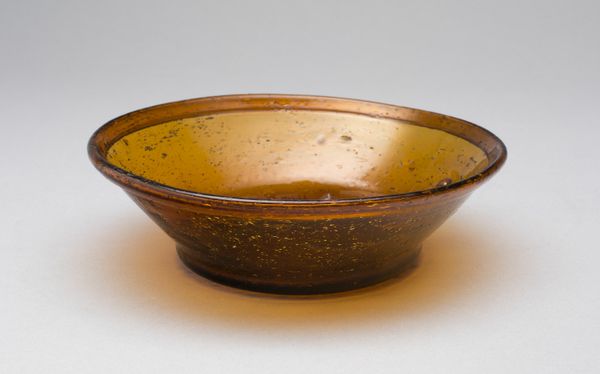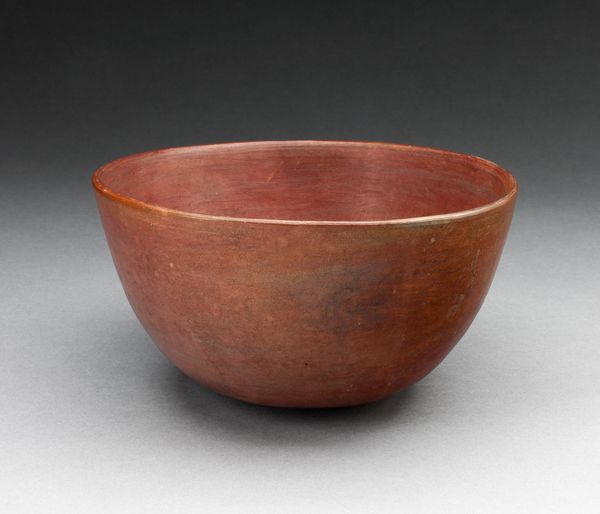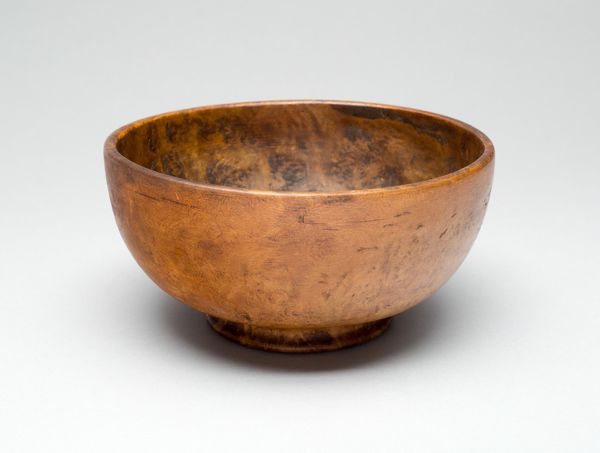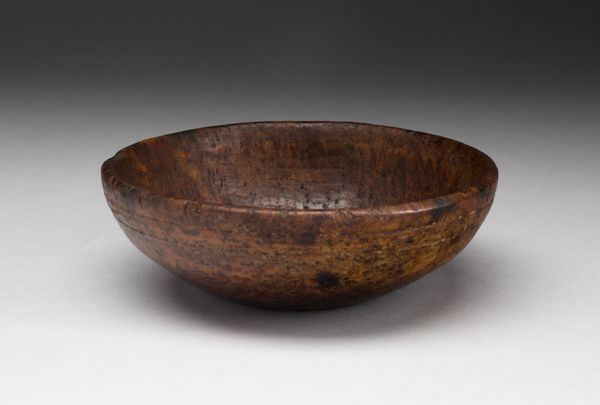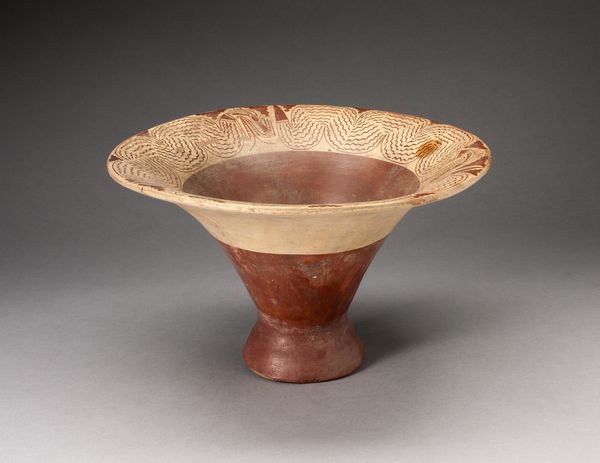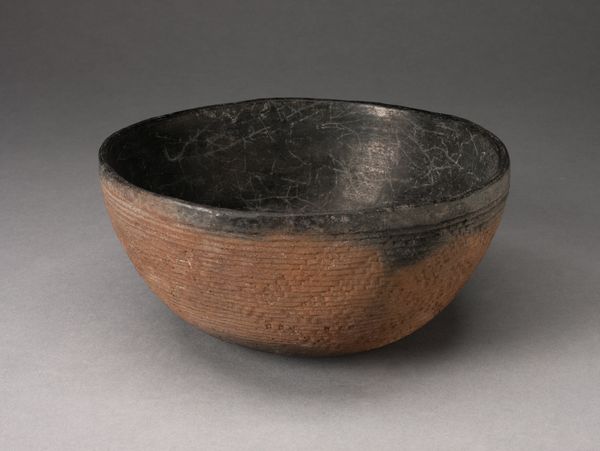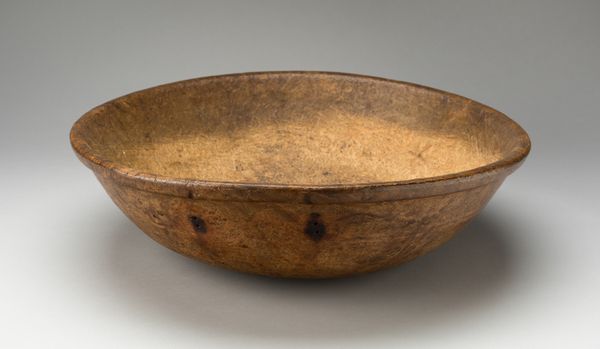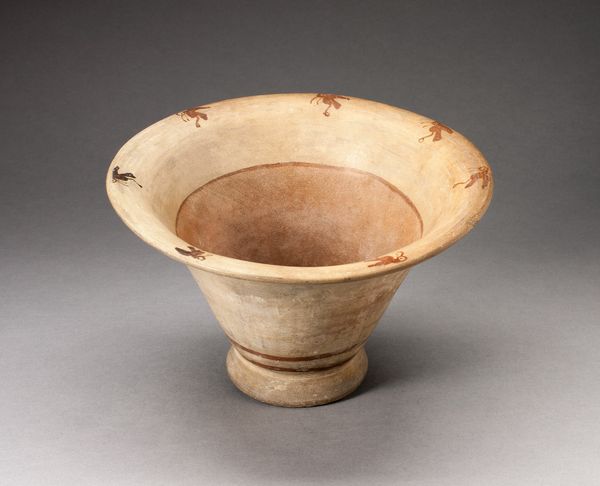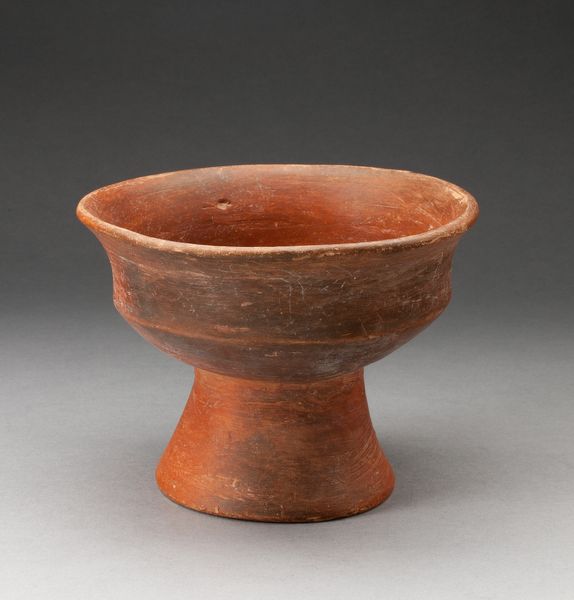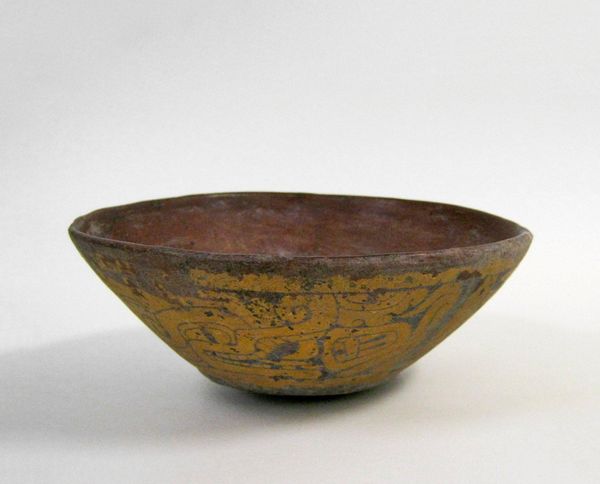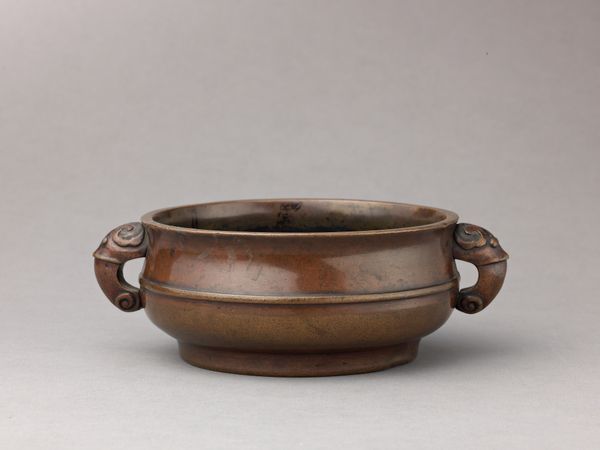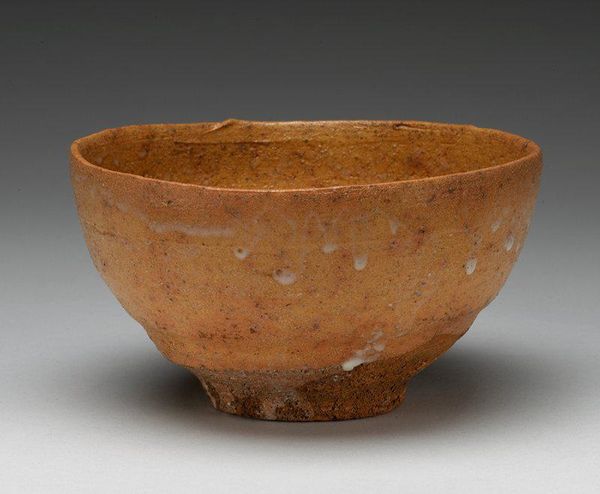
ceramic, earthenware
#
ceramic
#
earthenware
#
stoneware
#
decorative-art
Dimensions: 7 × 14 cm (2 3/4 × 5 1/2 in.)
Copyright: Public Domain
Curator: This simple yet striking bowl, currently held in the Art Institute of Chicago, was crafted from earthenware between 1809 and 1839, offering a fascinating glimpse into early 19th-century ceramics. Editor: My first thought is about its connection to earth, both in the literal sense, being crafted from earthenware, and how the brownish tone feels rustic, and humble. Curator: Indeed, earthenwares like this played a vital role in daily life at the time. The rise of industrial production impacted ceramics, but pieces like this bowl reflect older craft traditions still present in the domestic sphere. We must consider this bowl as reflecting a specific historical period shaped by socioeconomic transitions in ceramic manufacturing and availability to different classes of society. Editor: That’s an important reminder to consider the broader economic contexts. Yet I see it beyond mere function, particularly in its visual qualities. Brown, you know, often evokes stability, reliability, and connection to nature; the warm amber glaze also suggesting nourishment, hearth and home. Curator: Absolutely. Ceramics during this period often mirrored larger cultural anxieties and values. Its rustic feel resonated differently depending on who used it, whether for basic utility or more symbolic display reflecting particular ideas around “country life” valued differently according to shifting demographics due to urbanization and migration at the time. Editor: The bowl’s circular form may point back to ancient symbols of wholeness and cyclical patterns within existence – birth, life, and death. Beyond just the aesthetics, earthenware, from the point of the user and the era when it was made, it might also carry the more subconscious association with our ancestral heritage as humans and clay pots. Curator: Right, and one could further ask, who had access to even simple pieces of pottery? How does that define status and the complex social rituals around displaying and utilizing decorative objects that can carry different layers of social information at that time? The bowl can stand as more than simple pottery once one understands the historic setting behind the object. Editor: I agree, what seems mundane can actually contain layered historical meaning if we dive a little deeper. Curator: Understanding an object requires delving into complex histories to examine these fascinating points that are tied with economic structure and historic transformation of taste at the time. Editor: Exactly. And for me, that object’s true voice exists in the shared conversation between history and the imagery embedded within the material itself.
Comments
No comments
Be the first to comment and join the conversation on the ultimate creative platform.
